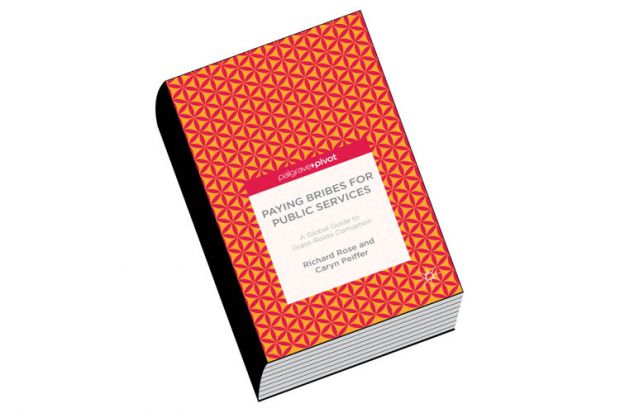In the past decade, corruption has been high on the agenda of governments and international bodies such as the United Nations, the World Bank and the Organisation for Economic Cooperation and Development, reflecting a growing consensus among academics and policymakers that its prevalence is stifling progress. But measuring corruption remains a significant challenge to formulating effective anti-corruption policy. Richard Rose and Caryn Peiffer argue that instead of basing estimates of corruption on perception alone, we need hard data based on the actual incidence of bribery.
The main challenge with perception-based measures pioneered by Transparency International and the World Bank is that perceptions may differ significantly from reality. Various attempts to respond to this have tried to measure corruption directly, such as the World Bank’s Enterprise Surveys, which asked: “Did you or any member of your households pay a bribe in the last one year when using public services?” Rose and Peiffer’s book draws on a unique database of the experience of more than a quarter of a million people in 119 countries, taken from five major multinational surveys of bribery: Afrobarometer, Eurobarometer, the Latin American Public Opinion Project, the Life in Transition Survey and the Global Corruption Barometer. The focus is on bribes paid for everyday public services that directly affect more than 1.6 billion people annually.
Using these data, the authors highlight some interesting facts: in countries where the press is most free, the likelihood of paying a bribe is reduced by 13 percentage points. Similarly, lower contact with public officials, greater availability of public services and reduced regulation are linked to lower incidences of bribery.
Although the estimates provided by surveys cited here are better than the perception indexes, they may not be free from bias. Respondents who are not supporters of a current government may overstate the incidence of bribery; a polluting businessman who is benefiting from bribing environmental inspectors may not want to reveal it. Hence, some researchers have attempted to measure corruption by observing it directly. Benjamin Olken of the Massachusetts Institute of Technology and Patrick Barron of the World Bank observed the bribes that truck drivers paid to police on routes to and from the Indonesian province of Aceh. On some 300 trips, they noted more than 6,000 illegal payments, representing 13 per cent of the per-unit cost of the trip. Ritva Reinikka of the World Bank and Jakob Svensson of Stockholm University estimated a staggering 87 per cent leakage rate in education grants to schools in Uganda. John McMillan and Pablo Zoido of Stanford University documented the case of a secret police chief in Peru during Alberto Fujimori’s presidency who bribed judges and politicians with sums ranging from $3,000 to $50,000 per month, and paid $1.5 million per month to a TV channel to control the media.
The authors propose very broad strategies to reduce corruption, such as increased transparency and contactless service delivery. These policies have weaknesses of their own, however. A contactless service delivery may reduce accessibility in countries with high illiteracy and low infrastructure. Raising transparency may cause bribe-payers and bribe-takers to become more sophisticated and clandestine. While more needs to be done in terms of proposing effective anti-corruption policies, the comparative analysis undertaken in this book using hard data is a great starting point.
M. Emranul Haque is senior lecturer in macroeconomics, University of Manchester.
Paying Bribes for Public Services: A Global Guide to Grass-Roots Corruption
By Richard Rose and Caryn Peiffer
Palgrave Macmillan, 124pp, £45.00
ISBN 9781137509666 and 9673 (e‑book)
Published 10 February 2015
Register to continue
Why register?
- Registration is free and only takes a moment
- Once registered, you can read 3 articles a month
- Sign up for our newsletter
Subscribe
Or subscribe for unlimited access to:
- Unlimited access to news, views, insights & reviews
- Digital editions
- Digital access to THE’s university and college rankings analysis
Already registered or a current subscriber? Login




